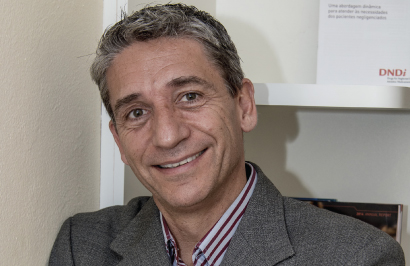
DNDi engages in research and development for neglected diseases, says Joel Keravec
Although there are incentives for innovation in research and development, neglected diseases still exist and remain affecting a large number of people
20/12/2017
Our work consists in developing new drugs or new formulations of existing drugs for people living with neglected diseases
Neglected diseases are a group of endemic tropical diseases, affecting mostly poor populations in Africa, Asia and Latin America. Together, they kill almost 1 million people every annually. Prevention measures and treatment for some of these diseases are known, but not universally available in the poorest places of the world. From 2000 to 2011, only 3.8% of the approved drugs were intended for this group, that together accounts for 10.5% of the global disease burden. Aiming to offer new treatments for neglected diseases, the Drugs for Neglected Diseases Initiative was created. To know more about this matter, the Brazilian Society of Tropical Medicines Press advisory (BSTM Press) talked to the executive director at DNDI in Latin America, Dr. Joel Keravec.
BSTM: How was DNDi founded?
Dr. Joel Keravec: A study conducted in 2001 by the Médecins Sans Frontières (MSF) and the Workgroup on Drugs for Neglected Diseases, DNDi precursor, revealed that despite neglected diseases accounting for 12% of the global disease burden, only 1% of the new drugs approved from 1975 to 1999 were intended for those diseases, including tropical neglected diseases, malaria and tuberculosis. A decade later, the situation remained untouched. From 2000 to 2011, only 3.8% of the new approved drugs were intended for this group, that together account for 10.5% of the global disease burden. This is called the fatal unbalance, reason why the DNDi was founded. Our initiative prioritizes these diseases since the beginning and we try to fill this gap in the drug industry.
The goal was, and still is, clear: to develop new drugs or new formulations of existing drugs for people living with neglected diseases
BSTM: How does the DNDi see the solution of health problems among neglected populations?
Dr. Joel Keravec: DNDi proposes an alternative partnership model, decentralized and collaborative, working with public and private sectors in an innovative way. This work covers all research and development chain, from finding new molecules, to pre-clinical and clinical research, ensuring equitable access conditions so the patients needs are met.
We work with some fundamental pillars, which are the main features of the non-profit model for research and development at DNDi and include: an approach aimed towards the patients and their real needs; a commitment with equitable access to treatment and free access to the knowledge produced by these researches; financial and scientific independence and knowledge and existing experiences enhancement by building solid partnerships with public and private partners.
This way, the DNDis model is a practical picture of how research and development should be driven for public interest with a decoupling approach between R&D investment and the products final price. This allows the drugs resulting from these researches to reach those who need them.
Added to this, to build R&D networks to develop sustainable research capacity in endemic countries and encourage public responsibility.
BSTM: What is currently the greatest challenge for DNDi?
Dr. Joel Keravec: Although there are incentives for research and development innovation, neglected diseases still exist and remain affecting a large number of people in neglected populations. However, most pharmaceutical companies abandon researches in these fields and engage in more promising markets. The result is a scenario where treatments for these diseases are very limited, some are toxic or difficult to administer and become a barrier for health systems and patients. DNDis primary focus is to develop safe, effective and accessible medications for millions of people living in vulnerable situation.
There are diseases such as hepatitis C, with a top-of-the-line treatment and an innovation level that completely changed how the disease was treated. Yet, this technology is not suited for the region, especially in terms of price: it is not accessible for the population, nor the health systems. Therefore, part of our effort is to ensure access through drug research and development with reduced prices. This way, our strategy is to dramatically reduce prices, while we maintain the treatments effectiveness.
Global health attention has also focused in the challenge of antimicrobial drug resistance, where excessive and improper use of drugs, along with precarious infection prevention and control, and scarce investments in developing new drugs, have caused a surge in the number of resistant organisms.
In this context, in May 2016, the World Health Organization (WHO) and the DNDi launched the Global Antibiotic Resistance Development Partnership (GARDP) aiming to develop and provide new treatments for bacterial infections with multi-drug resistance or for infections with inadequate treatment. Besides developing the product, the goal is to ensure the drug is used in a rational manner, to avoid resistance rise.…










